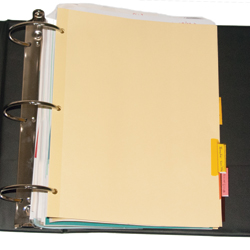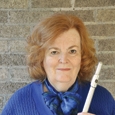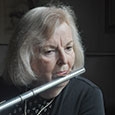A first impression is very powerful when meeting someone. A first lesson with a new student can set the tenor for an entire cycle of lessons. This important meeting should be treated with extra care and consideration, whether you are the teacher or the student.
Many years ago, I heard horror stories about a teacher who had the philosophy of breaking a student down in the first lesson and then convincing the student that he, and only he, could help the student find the way to success. This philosophy of teaching often leads to an abusive relationship between the teacher and student and prevents the student from reaching his full potential as a person and musician. The student eventually leaves the studio with a profound lack of self-confidence and perhaps without a proper musical education. More than likely the teacher has created emotional scars in the student which will haunt the student every time he picks the flute up to play. Self-doubt or feelings of inadequacy are never assets in musical performance.
Plan the first lesson carefully to ensure a positive learning environment. The study of music and the flute are life-long processes. There is rarely enough time for a professor to cover all aspects of what a student should know to be successful throughout his entire career. A good teacher presents the student with a foundation of information, including practice strategies to attain objectives. He should also provide performance opportunities and experiences and introduce students to an array of exercises in critical thinking with the goal that they will eventually learn to teach themselves. All this should be done in a professional manner. A teacher who misuses his authority and harms a student’s ego will never wean the student away from him. If you are a student and find yourself in this type of situation, talk with your parents and find another teacher immediately. A good teacher is one who will help you fulfill your goals in a healthy, supportive atmosphere. If you do not know if your teacher has a plan of study for you, he probably does not have one.
A Healthy Assessment
During the first lesson, the most challenging aspect in assessing a student is discovering not what the student knows, but what he does not know. In other words, the teacher should look for the gaps in the student’s performance abilities. Listen to the student play and ask questions during the first lesson. Once the gaps have been discovered, it is easy to make a thorough and accurate curriculum plan for the student’s term of study.
Years ago, like many first year university music professors, I was asked to teach a section of Music Appreciation. While this class was a requirement for music majors, it was also open to non-majors to fulfill a fine arts core curriculum goal. The class met two or three times a week and often 80 to 100 students were enrolled. As an applied teacher, I knew how to teach one-on-one, but teaching large classes was entirely new to me. I sought the advice of a seasoned and richly-honored chemistry professor who had spent most of his career teaching large classes. When I asked him for advice for teaching large classes, he said, “It is all in the eyes. When lecturing, look at their eyes. If their eyes go up, then they are thinking. If the eyes meet you straight on, they are taking in information, but if the eyes go down, they are in an emotional state and no information is being received. If you are lecturing and the eyes go down, go back and repeat what you have been lecturing about. Only this time slow down and present the concepts in a more simple fashion until all the eyes have returned to you straight on.” This proved to be excellent advice, not only for teaching large classes but for teaching students in private lessons too.
Employ this eye technique during first lessons. Ask non-threatening questions such as: What kind of flute do you play? How do you align the flute? Let me look at your hand size. Do you ever have pain when you play? What would you like to play for me today? What do you think are your assets in flute performance? What are your weaknesses? What are your short term goals? What are your long term goals? What kind of learner are you: visual, aural, tactile? What concertos, sonatas, and solos have you recently studied? What etude books have you studied under the guidance of a teacher? Which composers do you like to listen to? Who is your favorite flutist and why?
What you are doing by asking these questions is gathering information about the student and laying the groundwork for building dialogue between you and the student. Notice that I do not ask any questions about the student’s social life. My objective is not to become the flutist’s best friend, but to become the flutist’s best teacher.
As the student plays for you, look at the following areas
Body alignment
• Stance – Was it consciously chosen through instruction or is it happenstance?
Tone quality
• Does the student understand the relationship of the blowing angle of the air onto the wall of the embouchure hole?
• How does the student move the air stream?
• Vibrato production – Is vibrato used artistically?
Phrase shaping
• Does the student change tone colors to enhance melodic phrasing?
Rhythm
• Use of ritard and tempo markings
Musical style
• Does the student listen harmonically or just play melodically?
• Basic elements of music – the form, and overall pacing
Accuracy
• Intonation
• Is the technique well-formed?
I suggest jotting down short notes to help you design a course of study.
Arnold Jacobs, the legendary tuba professor and breathing expert, organized his lessons in a novel and brilliant way. He would say, “Let’s fix your most obvious problem first and then when that is fixed, we’ll move on to your next most obvious problem.” This is great advice for us all. After looking at your notes, use Jacobs’ advice and proceed with the flutist’s first most obvious problem such as tone production. Define the problem and then offer several ways to solve the problem.
The Teacher’s Lesson Notebook
A typical university professor teaches approximately 20 flute (or music education) majors each week in addition to a woodwind methods class, flute choir or chamber ensembles. To keep tabs on each student, many professors have expanded the grade and attendance book into a lesson notebook. Set up this lesson book during the first lesson.

For my lesson book I use a loose leaf notebook. It is separated into chapters with one for each student. Each chapter begins with a page of contact information for the student (name, school and home addresses, email address, and phone numbers) and his class schedule. The next page lists my playing assessment of the student. I also include a few words about long and short term goals and a curriculum guide charting the way to attain the goals. Each of the following pages represents one of the lessons for the term. If there are 12 lessons per term, there will be 12 pages. On each lesson page, I list three categories representing the areas of focus: foundation work (sound and technique), etudes, and solos. Under each category I make notes on what I have heard each week, what suggestions I have made to ensure progress in these areas, and a list of new assignments. This may seem like a lot of writing, but it is possible to develop a type of short hand so it only takes moments to make the entries. At each lesson, the student is graded on his progress from one week to the next. At the end of the term, it is very easy to clarify exactly what the grade for the term should be because you have excellent documentation of the term’s work.
As one student leaves the studio and the next enters, I quickly scan the lesson notebook entry and proceed with the lesson where we left off last week. When a student graduates, I take the chapters from each year and place them in another folder. This folder is helpful for writing more meaningful letters of recommendation in the future.
The Student’s Lesson and Practice Notebook
Setting up the student’s lesson and practice notebook is also completed at the first lesson. On the first page of the book, write your name and contact information. My contact information includes the studio phone number and the personal phone number I wish students to use, email address and office hours. The next page is required course syllabus from the university followed by a page outlining the personal goals of the student for the semester. These goals are set after evaluating the student at the first lesson. These goals are of two varieties: those for improving flute performance and others to satisfy graduation requirements such as juries, competitions, or recitals. I also include what music is to be covered during the term, listing technique and etude books plus solo assignments. If the student does not own the music, then I write the exact name of the composition, the publisher’s name, approximate price, and suggestions on where to purchase the music. For returning students this page is updated at the end of the previous term so the student has the correct music to begin the next term of lessons. The next pages are for each lesson. At the top of the page is the lesson assignment for the next week. I always include five to ten ways to practice each etude and solo. After the lesson, the student uses the lesson book as a diary noting what he has learned that day. During the practice week the student writes practice methods and the results he has used to accomplish preset goals along with the date and length of time spent practicing. He also notes any questions that arise during his practice for us to discuss at his next lesson.
The student’s notebook also holds the handouts that I share during the term. I suggest the student place the handouts in vinyl pages to keep them clean and tattered free. If these handouts are in a logical order and are clean and tatter free, then the student has masters that can be copied for his students once he is out in the field teaching. Most of my students leave university studies with a stack of handouts that are several inches high. Many of these handouts may be downloaded from www.flutetalkmagazine.com. (Patricia George’s extras)
Fine
It should take about one hour to ask the questions above, listen to the student play, construct a curriculum plan, and set up the notebooks. Ask the student if he has any questions about what is expected from his flute studies. Many professors set up a big brother/sister program matching an upperclassman with an entering freshman. Setting up a mentoring program can be helpful in nurturing students in their first semester of study. Following these suggestions ensures the semester of lessons is off to a good, healthy, productive start. These ideas, especially the teacher and student notebooks, can be adapted to use with younger students of various levels.






